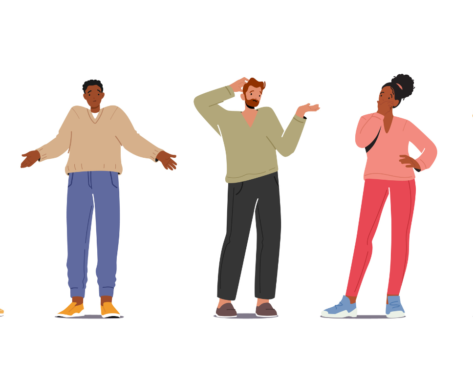LESSON OVERVIEW
In this lesson, students watch a video and learn structures for expressing regrets. They also practise some phrases for responding to regrets.
WARM-UP & VIDEO
At the beginning of the lesson, students complete some statements about themselves. The statements refer to regrets. They also briefly discuss some questions about regrets. Before watching the video, students look at a list of regrets and decide whether they are more common among kids and teens or adults. At this point the teacher should encourage students to use gerund after the verb regret when expressing regrets (e.g. Kids regret getting into fights.). Then, students watch two parts of the video (about two minutes altogether) and compare their answers with those from the video. After the video, students read six statements and decide to what extent they agree with them using a provided scale. The statements refer to regrets.
EXPRESSING REGRETS
In this part of the lesson students use guided discovery to learn different ways of expressing regrets. The structures include I wish…, If only…, I should have…, I regret… Then, they do a controlled practice activity. They need to paraphrase regrets using words in brackets and making any other necessary changes. After that, students look at six different responses to regrets and complete them with words provided in a box. The responses include: Don’t be so hard on yourself., I feel you on this one., Why don’t you try and pull yourself together?, etc. Students also need to match the responses to the regrets from the previous task.
Finally, students look at six photos of people in different situations. They need to write dialogues to present what the people in the photos are saying. They need to use structures for expressing regrets, as well as phrases for responding to regrets studied in the lesson.
Subscribe to unlock these and many other Standalone lesson with the Premium planWORKSHEETS















Such an interesting lesson! I loved it. Very creative and useful!
Thank you so much, Fernanda! We’re happy you liked it 🙂
What a wonderful lesson!
I love this lesson, its perfect
Thank you so much for your feedback, Caroline!
I love the lesson plans. I have recently started using it in my class.
Thank you so much! We’re happy to hear that 🙂
Thanks a lot a wonderful leson
Thank you so much! We’re happy you liked this lesson 🙂
Wonderful lesson. Very inspiring! I am going to use it today with my B2 students. Can’t thank you guys enough!
Thank you so much, Hayfa! We’re happy this lesson resonated with you 🙂
Great lesson! Thank you
Thank you so much!
overall good lesson with good functional vocabulary but exercises 3 and 4 are just stating the obvious
Thank you for your feedback! We’re glad you liked this lesson. As for the remark about exercises 3 and 4, we try to make sure our lessons are suitable for a variety of classrooms and maintain the view that things obvious to us might not always be so to someone else. Having said that, we always appreciate constructive feedback and take it into account when creating new lessons 🙂
I absolutely love this lesson! I’m so happy that it’s not only about grammar, but also includes a great vocabulary section. My students loved the last exercise — it was very creative and let them practise all the structures and vocabulary at the same time. I’m so grateful for your work! ❤️
Thank you so much for your kind words! We’re really happy you and your students had such a great time working with the lesson 🙂